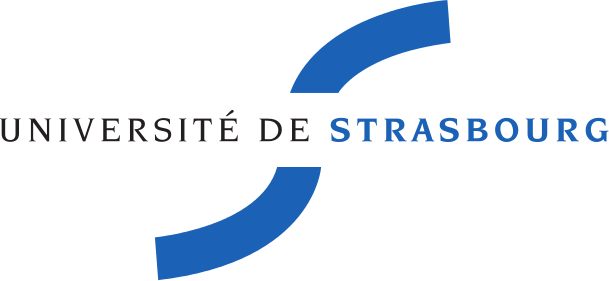About
The problem
Quantum Information Processing (QIP) is a research area with potentially ground-breaking applications, from overcoming Moore’s law limitations with Quantum Computers (QCs), to enhanced information security through quantum cryptography. Accordingly, it has been identified by the European Commission as a high-priority research field for data security.1 A central problem in QIP is the physical implementation of qubits, the basic components of any QIP apparatus, and which must fulfil several stringent criteria set out by DiVincenzo in his famous checklist.2 The problem consists in finding quantum systems that can be easily manipulated into forming arrays, while retaining long quantum decoherence times, i.e. retaining their quantum character long enough for a quantum calculation to be completed. This is a non-trivial problem for which several approaches have been put forth.
Many promising systems exhibit problems in combining scalability and slow decoherence. E.g., trapped ions require non-trivial infrastructures simply to be held in place3 and scaling to five qubits represents the state of the art.4 Nitrogen Vacancies (NVs) in diamonds cannot be positioned accurately enough, whereas bringing them closer together to achieve entanglement (e.g. in nanodiamonds) accelerates their decoherence.5 31P in 28Si qubits require 28Si of extremely high isotopic purity, their fabrication is exceedingly complicated and expensive and the end result is critically dependent on the presence of impurities.
The molecular approach
To overcome those limitations, Molecular Nanomagnets (MNMs) have been proposed for qubit implementation through their spin projection, using Single-Molecule Magnets,6 antiferromagnetic rings7 or triangles,8 or mononuclear complexes.9 MNMs can be easily made by bottom-up techniques, they are tunable by synthetic modifications, multifunctional, and they may be deposited onto surfaces. They therefore exhibit advantages where other qubit candidates are deficient. However, a stumbling block has been their fast decoherence (10-1–101 μs), mostly facilitated by the hyperfine interaction of the electron spin with nuclear spins belonging to nuclei of the metal ions and their environment.10 Their maximum decoherence times are limited to a few tens of μs.9c,11
Spin triangles and spin chirality
The key in tackling this problem lies in the observation that DiVincenzo’s list refers to relevant decoherence timescales, i.e. the decoherence time of the quantum property used as a computational degree of freedom. E.g., if the qubit's |0> and |1> states are encoded by the total spin projection (i.e. “up” or “down”), then the spin projection decoherence time is the relevant parameter. A breakthrough in the field came by the observation that triangular complexes of antiferromagnetically coupled half-integer spins exhibit a chiral spin texture in their ST = 1/2 ground state. Under specific conditions, new transitions arise which conserve total spin projection (ΔMS = 0) but reverse scalar spin chirality (Δχ = ±2)12. Thus, spin chirality instead of total spin projection could be employed as the computational degree of freedom. And since it was predicted that the spin of these molecules should couple with electric fields due to their lack of inversion center,13 instead of a magnetically controlled “up-down” qubit, we can speak of an electrically controlled “left-right” qubit.
For such a qubit, calculations have shown no appreciable decoherence for up to 102 μs14 when the spin triangle is aligned with its principal axis parallel to the magnetic field (B0||z)! As the two states of the spin-chirality qubit span a decoherence-free subspace,15 the decoherence of the spin-chirality qubit is not just slow, but practically frozen.
Moreover, electric control of spins affords the additional advantage of improved temporal and spatial manipulation with respect to magnetic fields. E.g., Electron Paramagnetic Resonance (EPR) techniques, the standard method for coherent spin control, require ac magnetic fields of ~102 G for manipulations in the 1 ns timescale, a highly difficult requirement. Spatial control in the order of ~1 nm is practically unattainable. The use of ac electric fields can remedy both problems, as strong and localized ac electric fields are readily available, e.g. through STM tips.13
The development of spin-chirality qubits offers the best of both worlds, combining ease of fabrication and deposition, with potentially very long decoherence times and convenient manipulation of individual qubits. Even if spin-chirality qubits prove to be functional only at cryogenic temperatures, this would be a reasonable and technically tractable compromise, taking into account their advantages over the alternatives. Indeed, as mentioned above, the best-performing room-temperature qubit candidates exhibit unworkable limitations.
While spin chirality has been used to explain experimental signatures of many materials,16 no studies have been carried out under electric fields on spin-chiral MNMs.
CHIRALQUBIT is an ambitious project which aims to confirm the hypothesis of electric control of the spins of antiferromagnetic half-integer spin triangles through their spin chirality, and propose their study as decoherence-free, spin-chirality qubits.
References
1 European Commission Decision C(2016)4614 of 25 July 2016 (Horizon 2020 Work Programme 2016 – 2017 14. Secure societies – Protecting freedom and security of Europe and its citizens), pp. 68-71.
2 DiVincenzo, D. P. Fortschritte Phys. 2000, 48, 771–783.
3 (a) Monroe, C.; Kim, J. Science 2013, 339, 1164–1169. (b) Bruzewicz et al., ArXiv151103293 Phys. Physicsquant-Ph 2015.
4 Monz et al., Science 2016, 351, 1068–1070.
5 (a) Schukraft et al., APL Photonics 2016, 1, 20801. (b) Knowles et al., M. Nat. Mater. 2013, 13, 21–25.
6 (a) Leuenberger and Loss, Nature 2001, 410 (6830), 789–793. (b) Wernsdorfer et al. Nature 2002, 416 (6879), 406–409.
7 (a) Ghirri et al., J. Phys. Chem. Lett. 2015, 6, 5062–5066. (b) Fernandez et al., Nat. Commun. 2016, 7, 10240.
8 (a) Mitrikas et al., Phys Chem Chem Phys 2008, 10, 743–748. (b) Lutz et al., Mol. Phys. 2013, 111, 2897–2902.
9 (a) Zadrozny et al., ACS Cent. Sci. 2015, 1 (9), 488–492. (b) Zadrozny et al., Inorg. Chem. 2015, 54 (24), 12027–12031. (c) Bader et al., Nat. Commun. 2014, 5, 5304.
10 (a) Schlegel et al., Phys. Rev. B 2011, 83 (13). (b) Ardavan et al., Phys. Rev. Lett. 2007, 98, 57201.
11 Atzori et al., J. Am. Chem. Soc. 2016, 138, 2154–2157.
12 Cz± ≡ χ± = ±1 are the eigenvalues of the scalar spin-chirality operator
13 Trif, M.; Troiani, F.; Stepanenko, D.; Loss, D. Phys. Rev. Lett. 2008, 101 (21), 217201.
14 Troiani, F.; Stepanenko, D.; Loss, D. Phys. Rev. B 2012, 86 (16), 161409(R).
15 Lidar, D. A.; Chuang, I. L.; Whaley, K. B. Phys. Rev. Lett. 1998, 81 (12), 2594–2597.
16Belinsky, M. I. Inorg. Chem. 2016, 55 (9), 4078–4090.




